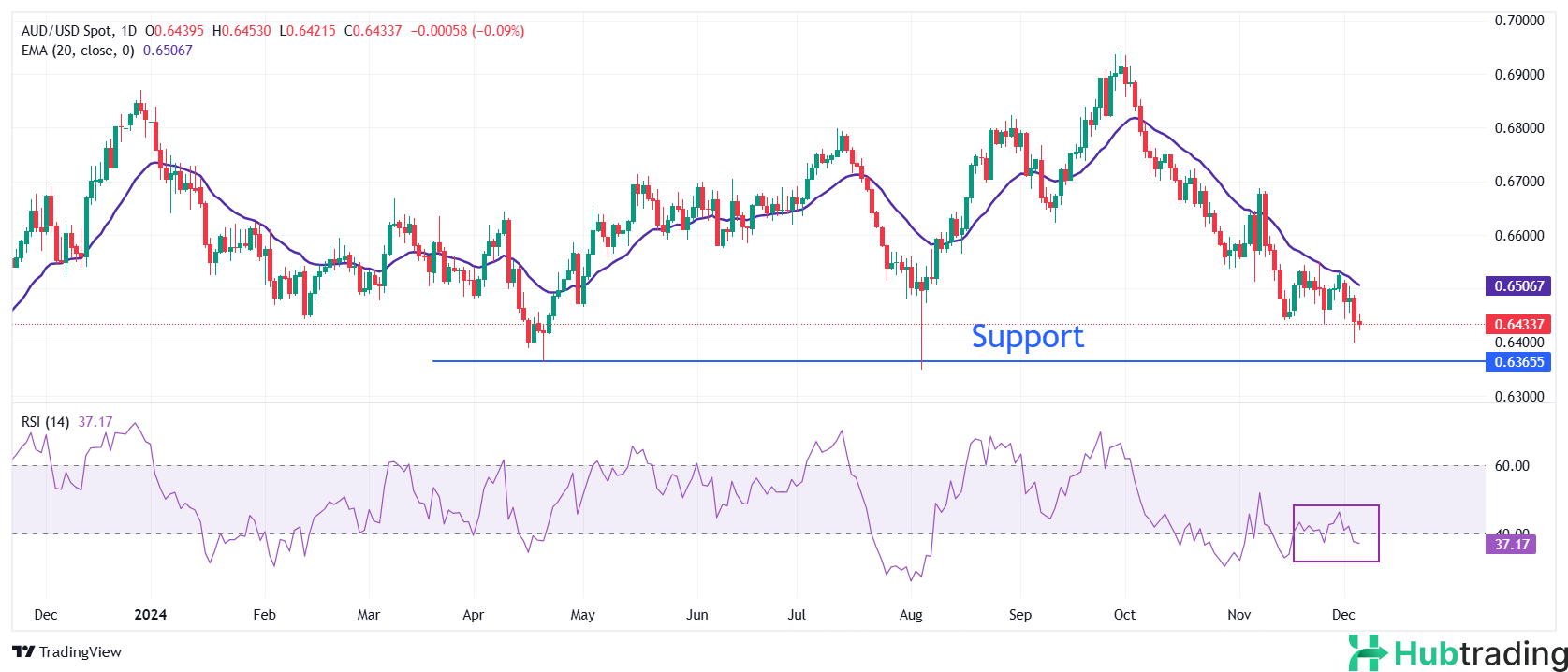- USD rises as higher US Initial Jobless Claims put pressure on the US Dollar.
- The US NFP data will play a key role in shaping expectations for the Fed's interest rate decision at the December 18 policy meeting.
- Weak Australian Q3 GDP data strengthens dovish expectations for the RBA.
The AUD/USD pair edges higher to around 0.6440 but continues to trade within Wednesday's range during Thursday’s North American session. The Australian Dollar (AUD) gains slightly as the US Initial Jobless Claims data for the week ending November 29 came in higher than expected, showing 224K claims, up from the previous 215K.
This caused the US Dollar Index (DXY), which measures the Greenback's strength against a basket of major currencies, to slide below the 106.00 mark. Investors are now focused on the upcoming US Nonfarm Payrolls (NFP) data for November, which will provide fresh insights into the labor market and influence expectations for the Federal Reserve's policy decision at its December 18 meeting.
With the Fed having already started its easing cycle in September, concerns about deteriorating labor demand persist, although inflation is expected to remain on a sustainable path towards the 2% target. According to the CME FedWatch tool, there is a 77% chance the Fed will cut rates by 25 basis points to 4.25%-4.50%, while the remainder expects rates to stay unchanged. The NFP report is expected to show the addition of 200K jobs, with the Unemployment Rate estimated to rise to 4.2% from 4.1%.
Meanwhile, the outlook for the Australian Dollar has weakened, with the Reserve Bank of Australia (RBA) expected to start cutting rates in April 2025. This dovish sentiment is supported by weak Australian Q3 GDP data.
The near-term outlook for AUD/USD is bearish, as the 20-day Exponential Moving Average (EMA) around 0.6500 is declining, and the 14-day Relative Strength Index (RSI) has dropped below 40, signaling strong bearish momentum. A break below Wednesday’s low of 0.6400 could open the door for further downside towards the August low of 0.6348 and the psychological support level at 0.6300.
On the upside, a recovery above the November 25 high of 0.6550 could lead the pair towards the 0.6600 resistance level, followed by the September 11 low at 0.6622.
AUD/USD Daily Chart






